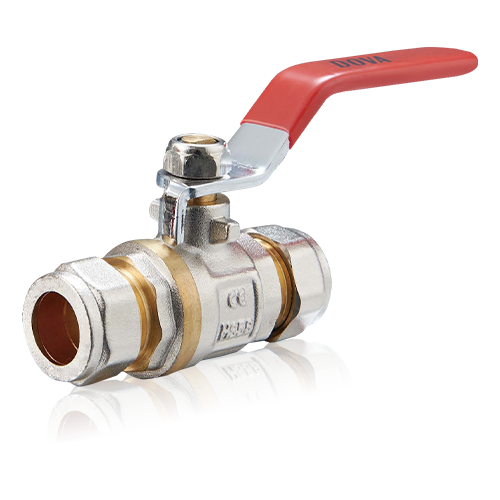2025-09-12
A brass check valve is a type of valve that permits fluid to flow in one direction only, automatically closing when the flow direction reverses. Brass check valves are made from brass, a durable alloy of copper and zinc, offering a combination of strength, resistance to corrosion, and ease of manufacture. These valves are typically used in systems where backflow prevention is crucial, such as in water treatment plants, heating systems, or industrial machinery.

The basic operation of a check valve involves a movable component, such as a ball or disc, that closes when the fluid flow attempts to reverse. The valve only opens when the flow is in the intended direction, preventing the backflow of fluid that could cause damage or contamination.
Materials Used in Brass Check Valves
Brass check valves are made from various materials that contribute to their strength, corrosion resistance, and overall performance. The common materials used in the production of brass check valves include:
1. Brass Alloys
Brass is an alloy of copper and zinc, known for its strength, durability, and ease of machining. The exact composition of the brass used in check valves can vary depending on the application, but it typically contains around 60-85% copper and 15-40% zinc. Some variations of brass, such as those with additional metals like lead or tin, may be used for specific properties.
Common Brass Alloys Used:
C36000 (Free-Cutting Brass): This alloy is often used for valves because it is easy to machine, corrosion-resistant, and has good strength. It is particularly popular in mass production due to its ease of manufacturing.
C37700 (Leaded Brass): Leaded brass alloys are used when a softer material is needed to allow for easier forming and machining. While it is corrosion-resistant, leaded brass is less commonly used in potable water systems due to health concerns related to lead.
C28000 (Brass with Tin): This type of brass contains tin, which improves its resistance to corrosion, especially in applications exposed to water or other aggressive fluids. It is more commonly used in environments where brass is subjected to harsh conditions.
2. Bronze Alloys (Optional)
While brass is the common material, some high-performance check valves may be made from bronze alloys. Bronze is stronger and more resistant to corrosion than brass, making it suitable for more demanding applications, such as high-pressure systems or environments with highly corrosive fluids.
Bronze vs. Brass: Bronze is typically used in situations where higher strength and corrosion resistance are necessary, such as in marine or industrial applications. While it may be more expensive and harder to machine than brass, it offers durability.
3. Rubber or Elastomer Seals
The internal components of brass check valves, including seals and O-rings, are often made from rubber or elastomer materials. These seals are critical for ensuring a tight closure of the valve to prevent leakage and ensure proper backflow prevention. Common materials for seals include:
Nitrile Rubber (NBR): Used in applications where oil and fuel resistance is required.
EPDM (Ethylene Propylene Diene Monomer): Ideal for applications exposed to water and steam.
Viton: A fluoropolymer-based elastomer used for high-temperature and chemical-resistant applications.
4. Stainless Steel Components
In some cases, the internal components of the brass check valve, such as the spring or ball mechanism, may be made from stainless steel. Stainless steel offers excellent corrosion resistance and strength, ensuring that the check valve operates smoothly for extended periods without degradation of the internal components.